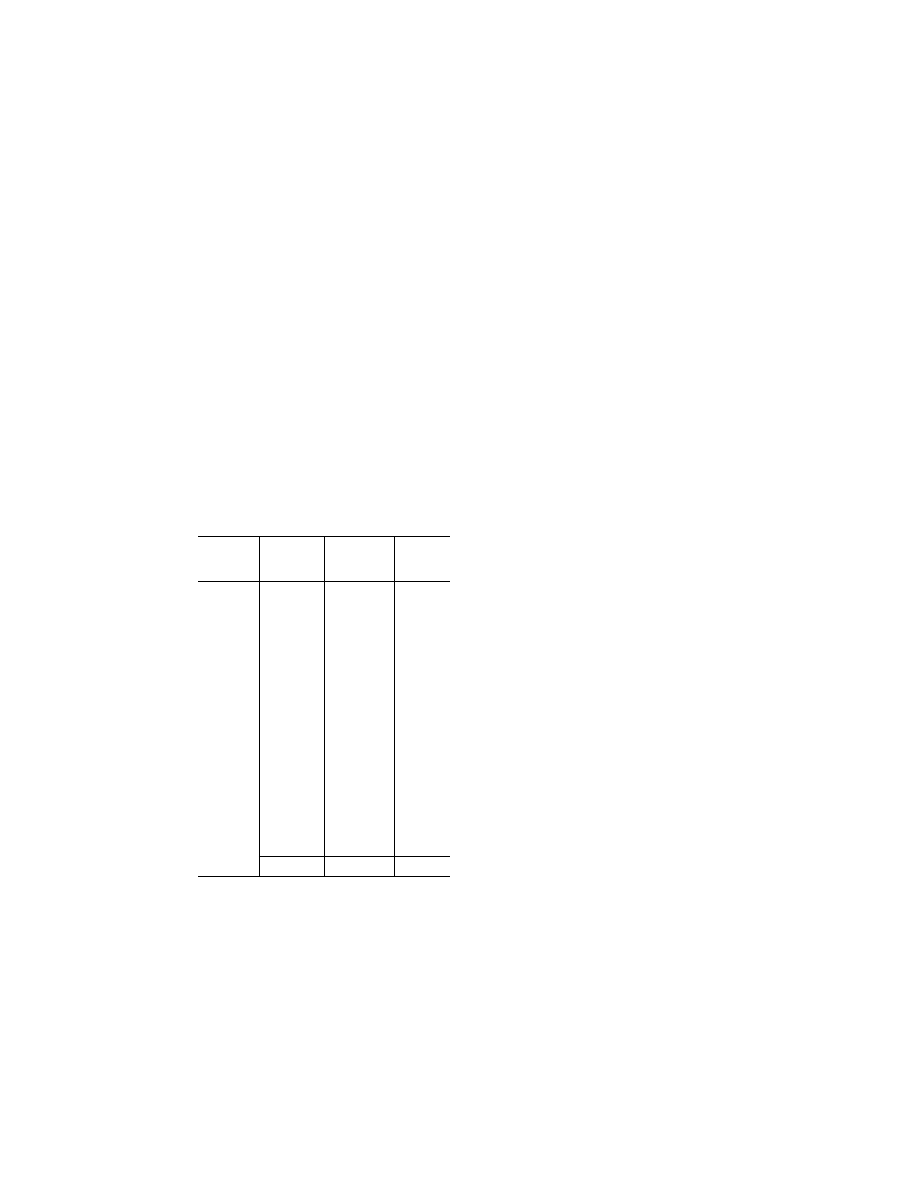
80
14 CFR Ch. I (1–1–14 Edition)
Pt. 60, App. A
(ii) 55 dB @ 1000 Hz;
(iii) 30 dB @ 16 kHz
(N
OTE
: These limits are for unweighted
1
⁄
3
octave band sound levels. Meeting these lim-
its for background noise does not ensure an
acceptable flight simulator. Airplane sounds
that fall below this limit require careful re-
view and may require lower limits on back-
ground noise.)
(6) Validation testing. Deficiencies in air-
plane recordings should be considered when
applying the specified tolerances to ensure
that the simulation is representative of the
airplane. Examples of typical deficiencies
are:
(a) Variation of data between tail numbers;
(b) Frequency response of microphones;
(c) Repeatability of the measurements.
T
ABLE
A2B—E
XAMPLE OF
C
ONTINUING
Q
UALI
-
FICATION
F
REQUENCY
R
ESPONSE
T
EST
T
OL
-
ERANCE
Band center
frequency
Initial results
(dBSPL)
Continuing
qualification
results
(dBSPL)
Absolute
difference
50 .................
75.0 73.8
1.2
63 .................
75.9 75.6
0.3
80 .................
77.1 76.5
0.6
100 ...............
78.0 78.3
0.3
125 ...............
81.9 81.3
0.6
160 ...............
79.8 80.1
0.3
200 ...............
83.1 84.9
1.8
250 ...............
78.6 78.9
0.3
315 ...............
79.5 78.3
1.2
400 ...............
80.1 79.5
0.6
500 ...............
80.7 79.8
0.9
630 ...............
81.9 80.4
1.5
800 ...............
73.2 74.1
0.9
1000 .............
79.2 80.1
0.9
1250 .............
80.7 82.8
2.1
1600 .............
81.6 78.6
3.0
2000 .............
76.2 74.4
1.8
2500 .............
79.5 80.7
1.2
3150 .............
80.1 77.1
3.0
4000 .............
78.9 78.6
0.3
5000 .............
80.1 77.1
3.0
6300 .............
80.7 80.4
0.3
8000 .............
84.3 85.5
1.2
10000 ...........
81.3 79.8
1.5
12500 ...........
80.7 80.1
0.6
16000 ...........
71.1 71.1
0.0
Average ......................
........................
1.1
8. A
DDITIONAL
I
NFORMATION
A
BOUT
F
LIGHT
S
IMULATOR
Q
UALIFICATION FOR
N
EW OR
D
E
-
RIVATIVE
A
IRPLANES
a. Typically, an airplane manufacturer’s
approved final data for performance, han-
dling qualities, systems or avionics is not
available until well after a new or derivative
airplane has entered service. However, flight
crew training and certification often begins
several months prior to the entry of the first
airplane into service. Consequently, it may
be necessary to use preliminary data pro-
vided by the airplane manufacturer for in-
terim qualification of flight simulators.
b. In these cases, the NSPM may accept
certain partially validated preliminary air-
plane and systems data, and early release
(‘‘red label’’) avionics data in order to permit
the necessary program schedule for training,
certification, and service introduction.
c. Simulator sponsors seeking qualifica-
tion based on preliminary data should con-
sult the NSPM to make special arrange-
ments for using preliminary data for flight
simulator qualification. The sponsor should
also consult the airplane and flight simu-
lator manufacturers to develop a data plan
and flight simulator qualification plan.
d. The procedure to be followed to gain
NSPM acceptance of preliminary data will
vary from case to case and between airplane
manufacturers. Each airplane manufactur-
er’s new airplane development and test pro-
gram is designed to suit the needs of the par-
ticular project and may not contain the
same events or sequence of events as another
manufacturer’s program, or even the same
manufacturer’s program for a different air-
plane. Therefore, there cannot be a pre-
scribed invariable procedure for acceptance
of preliminary data, but instead there should
be a statement describing the final sequence
of events, data sources, and validation proce-
dures agreed by the simulator sponsor, the
airplane manufacturer, the flight simulator
manufacturer, and the NSPM.
N
OTE
: A description of airplane manufac-
turer-provided data needed for flight simu-
lator modeling and validation is to be found
in the IATA Document ‘‘Flight Simulator
Design and Performance Data Require-
ments,’’ as amended.
e. The preliminary data should be the man-
ufacturer’s best representation of the air-
plane, with assurance that the final data will
not significantly deviate from the prelimi-
nary estimates. Data derived from these pre-
dictive or preliminary techniques should be
validated against available sources includ-
ing, at least, the following:
(1) Manufacturer’s engineering report. The
report should explain the predictive method
used and illustrate past success of the meth-
od on similar projects. For example, the
manufacturer could show the application of
the method to an earlier airplane model or
predict the characteristics of an earlier
model and compare the results to final data
for that model.
(2) Early flight test results. This data is
often derived from airplane certification
tests, and should be used to maximum ad-
vantage for early flight simulator valida-
tion. Certain critical tests that would nor-
mally be done early in the airplane certifi-
cation program should be included to vali-
date essential pilot training and certifi-
cation maneuvers. These include cases where
a pilot is expected to cope with an airplane
failure mode or an engine failure. Flight test
VerDate Mar<15>2010
20:48 Jan 30, 2014
Jkt 232047
PO 00000
Frm 00090
Fmt 8010
Sfmt 8002
Q:\14\14V2.TXT
ofr150
PsN: PC150